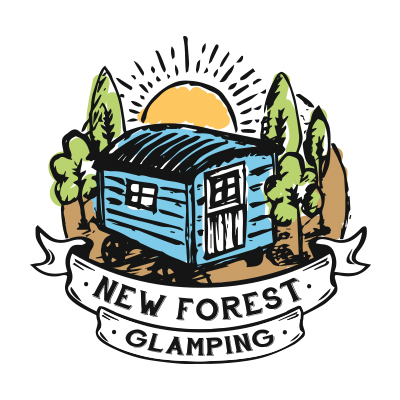At New Forest Glamping, we’re proud to be located in such a stunning, yet history-rich, location. As home to an array of fascinating wildlife, and host to endless relaxing and adventurous activities, the New Forest offers numerous opportunities to unwind, relax and explore.
As the largest contiguous area of unsown vegetation in lowland Britain, the New Forest National Park covers 566 km2. Comprising of broadleaved woodland, heathland and grassland, as well as wet heathland and tree plantations, the New Forest truly is a nature and history lover’s paradise.
Around 12,000 years ago, this once deciduous woodland was recolonised by birch and eventually beech and oak after the withdrawal of the ice sheets. Even at this time, the New Forest may have been used as grazing land for horses as a result of its poor soil quality, which failed to be used for its original purpose of cultivation.

Following Anglo-Saxon settlement in Britian, the Jutes, one of the early Anglo-Saxon tribal groups who colonised this area of southern Hampshire, established the forest as the Jutish Kingdom of Ytine. Ytene (or ettin) is also found locally as a synonym for giant, and features heavily in local folklore.
The New Forest was proclaimed as a royal forest following the Norman Conquest by William the Conqueror in 1079. Used for royal hunts, mainly of deer, it was created at the expense of more than 20 small hamlets and isolated farmsteads.
Did you know that the New Forest is the only forest the 1086 Domesday Book records in detail? First recorded as the Nova Foresta, the section devoted to it is included between lands of the king’s thegns and the town of Southampton. In 1698, the common rights were confirmed by statute and the New Forest became a primary source of timber for the Royal Navy.
Plantations were created in the 18th century for this purpose, despite some 4000 oak trees being lost in the Great Storm of 1703.
The Forest gained new protection under the New Forest Act 1877 following the naval plantations encroachment on the rights of the Commoners. This resulted in the historic rights of the Commoners and prohibited the enclosure of more than 65 km2 at any time. As opposed to the Crown, the Court of Verderers were reconstituted as representatives of the Commoners.
Today, over 90% of it is still owned by the Crown, which have been managed by the Forestry Commission since 1923.
During the First World War, the felling of broadleaved trees began to accommodate the demand for wood, which continued during the Second World War. Ashley Range, an area in the New Forest, was used as a bombing range during the Second World War.
While the process is being reversed today in areas, with some now heathland or broadleaved woodland, rhododendron still remains an issue.
In 1971, the New Forest became a Site of Special Scientific Interest, and was granted special status as the New Forest Heritage Area in 1985.
This is in addition to additional planning controls, which were added in 1992, and was proposed as a UNESCO World Heritage Site in June 1999. In 2005, this majestic forest, which is steeped in rich history, became a National Park in 2005.
With connections to royalty, and as home to wonderful wildlife and adventurous activities, its unsurprising that this majestic forest is the place where our cosy and comfortable shepherds hut resides.
Get in touch today for more information and to secure your booking.


